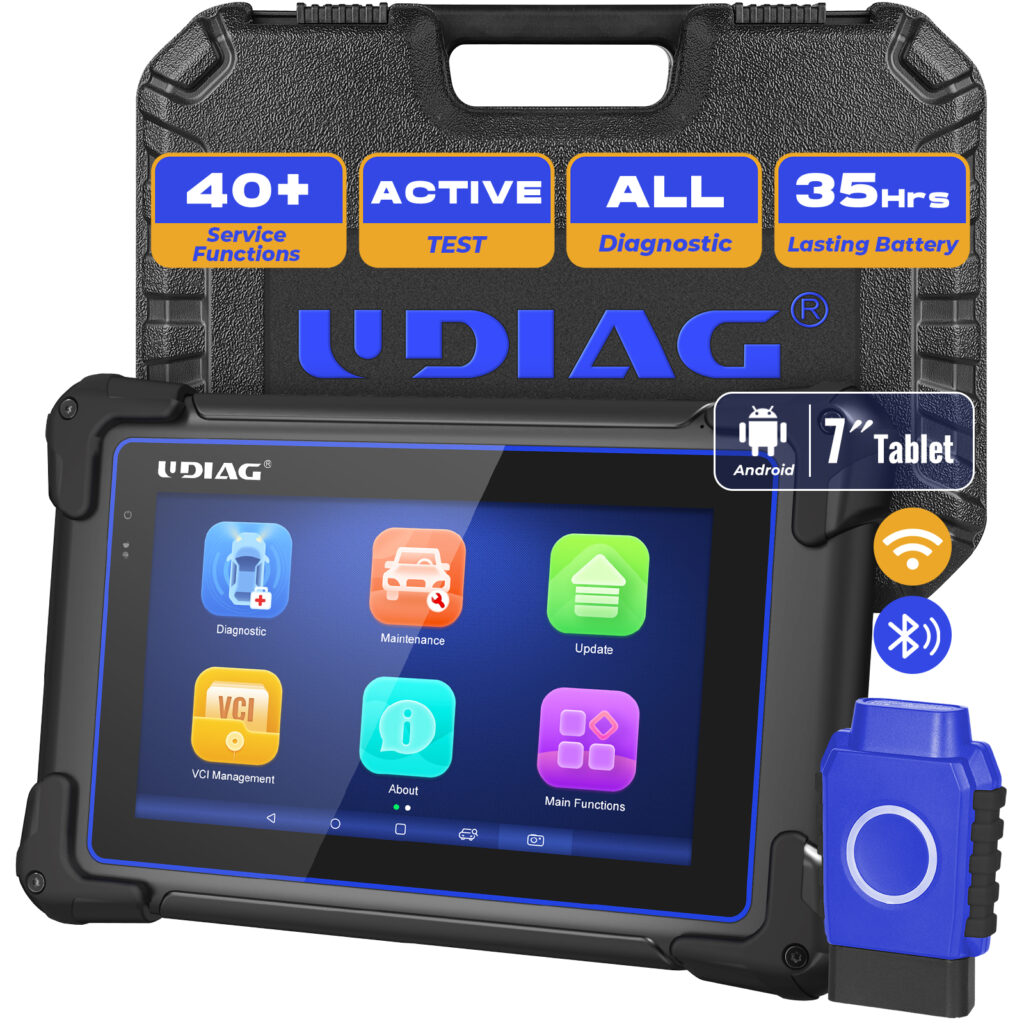Will a diagnostic tool work if the engine won’t start at all?
2024-09-09 by UDIAG
I. Introduction
Automotive diagnostic tools are indispensable in modern vehicle repair and maintenance, offering insights into various system malfunctions. When an engine refuses to start, it can be a frustrating experience for vehicle owners and technicians alike. In such situations, diagnostic tools are often considered to pinpoint the problem. This essay explores whether a diagnostic tool can be effective when an engine won’t start and discusses the various factors that influence its functionality.
II. Understanding Diagnostic Tools
A. Types of Diagnostic Tools
Diagnostic tools come in various forms, each designed for specific tasks. On-Board Diagnostics (OBD) scanners are the most common, providing a broad range of functions from reading error codes to live data monitoring. Specialty diagnostic tools cater to particular systems within a vehicle, such as the Anti-lock Braking System (ABS) or airbag systems, offering more focused diagnostic capabilities.
B. Functions of Diagnostic Tools
Diagnostic tools serve several key functions:
- Reading and Clearing Error Codes: They access the vehicle’s computer system to retrieve stored trouble codes, which indicate specific problems.
- Live Data Monitoring: They provide real-time data from various sensors and systems, which can be crucial for identifying issues.
- System Tests and Calibrations: Some advanced tools allow technicians to perform tests and calibrations on different vehicle systems to ensure proper functionality.
III. Diagnosing a Non-Starting Engine
A. Common Causes of Engine Failure to Start
When an engine fails to start, it could be due to several factors:
- Battery Issues: A dead or weak battery is a common culprit, preventing the engine from cranking.
- Fuel System Problems: Issues with the fuel pump, fuel filter, or fuel injectors can hinder fuel delivery.
- Ignition System Faults: Faulty spark plugs, ignition coils, or the ignition switch can cause starting problems.
- Starter Motor Issues: A malfunctioning starter motor may fail to engage the engine.
B. Role of Diagnostic Tools in Identifying Issues
Diagnostic tools can be instrumental in diagnosing a non-starting engine:
- Checking for Stored Trouble Codes: If the engine control unit (ECU) has registered any fault codes related to the non-start issue, the diagnostic tool can retrieve them, providing valuable clues.
- Monitoring Live Data: Diagnostic tools can display live data, such as fuel pressure readings and ignition signals, helping to identify any abnormalities that might be preventing the engine from starting.
IV. Limitations of Diagnostic Tools
A. When the Engine is Completely Dead
Diagnostic tools require power to operate. If the engine is completely dead, meaning there’s no power at all, the diagnostic tool itself might not function. In such cases, the issue could be with the battery or wiring, making the tool ineffective until power is restored.
B. Issues Beyond Diagnostics
Certain problems may not be detectable by electronic diagnostics. Physical damage to engine components or mechanical failures often require visual inspection or manual testing rather than electronic diagnostics.
V. Steps to Take if the Engine Won’t Start
A. Preliminary Checks
Before using a diagnostic tool, perform these preliminary checks:
- Battery Charge and Connections: Ensure the battery is charged and connections are secure.
- Fuel Level and Pump Operation: Verify that there’s fuel in the tank and the fuel pump is functioning.
- Starter Motor Functionality: Check if the starter motor is engaging when you turn the key.
B. Using Diagnostic Tools Effectively
Once preliminary checks are complete:
- Connecting the Tool: Connect the diagnostic tool to the vehicle’s OBD port and follow the instructions for initialization.
- Checking for Error Codes: Retrieve and analyze any stored trouble codes.
- Using Live Data Features: Monitor live data for irregularities that could indicate the source of the problem.
VI. Alternative Diagnostic Approaches
A. Visual and Manual Inspections
If the diagnostic tool provides limited information, perform visual and manual inspections:
- Inspect Fuses, Cables, and Connectors: Look for visible damage or loose connections.
- Check for Obvious Physical Damage: Examine the engine and related components for any signs of damage.
B. Seeking Professional Help
When all else fails, or if the issue is beyond the scope of diagnostic tools, consult a professional mechanic or specialist. Their expertise and advanced diagnostic equipment can help resolve complex issues.
Conclusion
Diagnostic tools are valuable assets in diagnosing and troubleshooting vehicle issues, including those that prevent an engine from starting. However, their effectiveness can be limited by factors such as a lack of power or issues that go beyond electronic diagnostics. Combining the use of diagnostic tools with thorough preliminary checks and alternative diagnostic methods can provide a comprehensive approach to resolving non-start scenarios.
FAQs
Q1: Can a diagnostic tool still work if the car’s battery is completely dead?
No, if the car’s battery is completely dead, the diagnostic tool will likely not work because it requires power to operate. In such cases, you’ll need to address the battery issue first before using the diagnostic tool.
Q2: What should I do if the diagnostic tool can’t establish a connection with the vehicle?
If the diagnostic tool can’t connect, check that it is properly connected to the OBD port. Ensure the vehicle’s ignition is turned to the “On” position. Also, inspect the OBD port and wiring for any damage or loose connections.
Q3: Are there any common diagnostic tools that are particularly effective for non-start issues?
While there are no tools exclusively designed for non-start issues, advanced OBD-II scanners with comprehensive diagnostic capabilities and live data monitoring are useful. They can help identify problems related to the fuel system, ignition system, and other components.
Q4: How can a diagnostic tool help if the engine turns over but doesn’t start?
If the engine turns over but doesn’t start, a diagnostic tool can help by reading trouble codes related to the fuel system, ignition system, or other relevant components. It can also provide live data, such as fuel pressure and ignition timing, to pinpoint the issue.
Q5: What are some common trouble codes associated with non-starting engines?
Common trouble codes for non-starting engines include P0335 (Crankshaft Position Sensor Circuit), P0340 (Camshaft Position Sensor Circuit), P0230 (Fuel Pump Primary Circuit), and P0600 (Serial Communication Link). These codes can give insights into potential issues affecting engine start.
Q6: Can a diagnostic tool identify mechanical problems that prevent the engine from starting?
No, diagnostic tools primarily focus on electronic and sensor-related issues. Mechanical problems such as a seized engine or damaged internal components typically require visual inspection or manual testing.



